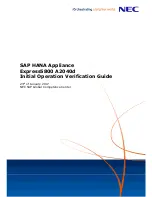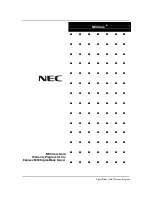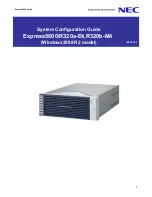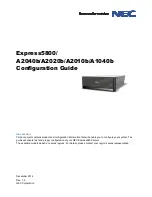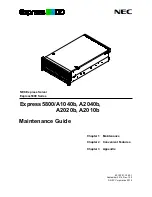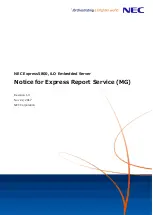
Internal Cabling Diagrams 10-7
RAID5 (st parity)
Data is "striped" across three physical disk drives. For data redundancy, drives are
encoded with rotated XOR redundancy.
IMPORTANT:
Because data is read from or written to any of three hard disks
successively, the disk access performance is inferior to that for a
single disk.
Because the parity data is saved, the logical capacity is lower than
the total capacity of the three hard disks a little.
To build a disk array, at least two hard disks are required. Use the SCSI cables sold separately for
the connection.
In the figure below, the number of connectors varies depending on the type of the SCSI cable.
If the optional hot-swap SCSI hard disk drive cage is installed in the server, connect the SCSI cable
to the back of the optional hot-swap SCSI hard disk drive cage.
Connect the LED cable provided with the server to the LED connector on the mother board and the
disk array controller for indicating the hard disk access status.
The RAID configuration utility and RAID management utility are attached to the optional board.
Refer to the manual that comes with the optional board for detail instruction.
Summary of Contents for N8100-1005F
Page 16: ...x This page is intentionally left blank...
Page 33: ...General Description 2 5 Rear View 1 2 3 2 4 5 6 7 8 9 10 11 12...
Page 104: ...4 42 Configuring Your Server This page is intentionally left blank...
Page 148: ...5 44 Installing the Operating System with Express Setup This page is intentionally left blank...
Page 168: ...6 20 Installing and Using Utilities This page is intentionally left blank...
Page 180: ...7 12 Maintenance This page is intentionally left blank...
Page 270: ...10 14 Internal Cabling Diagrams This page is intentionally left blank...
Page 272: ...A 2 Specifications This page is intentionally left blank...
Page 314: ...F 4 Product Configuration Record Table This page is intentionally left blank...
































